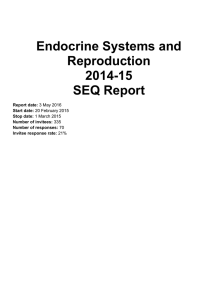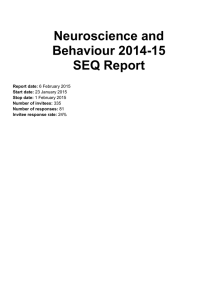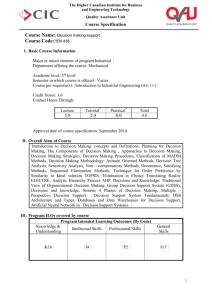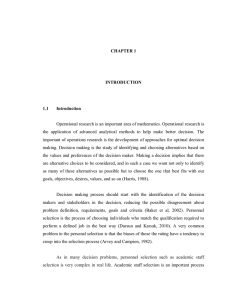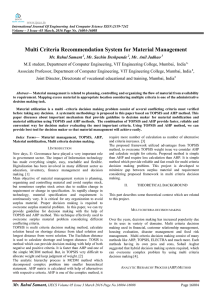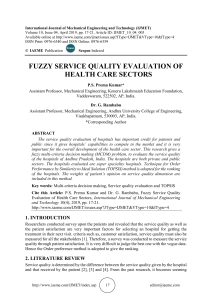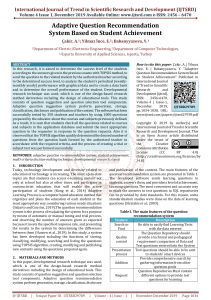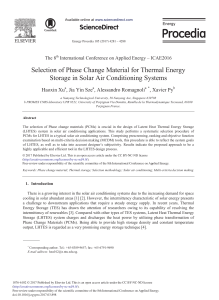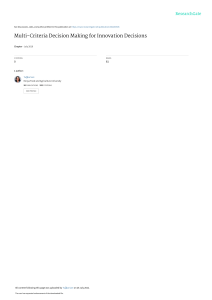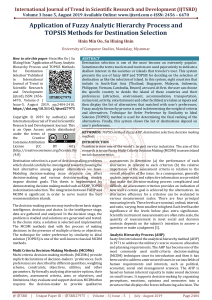2.994 MADM with Applications in Material Selection and Optimal Design
advertisement
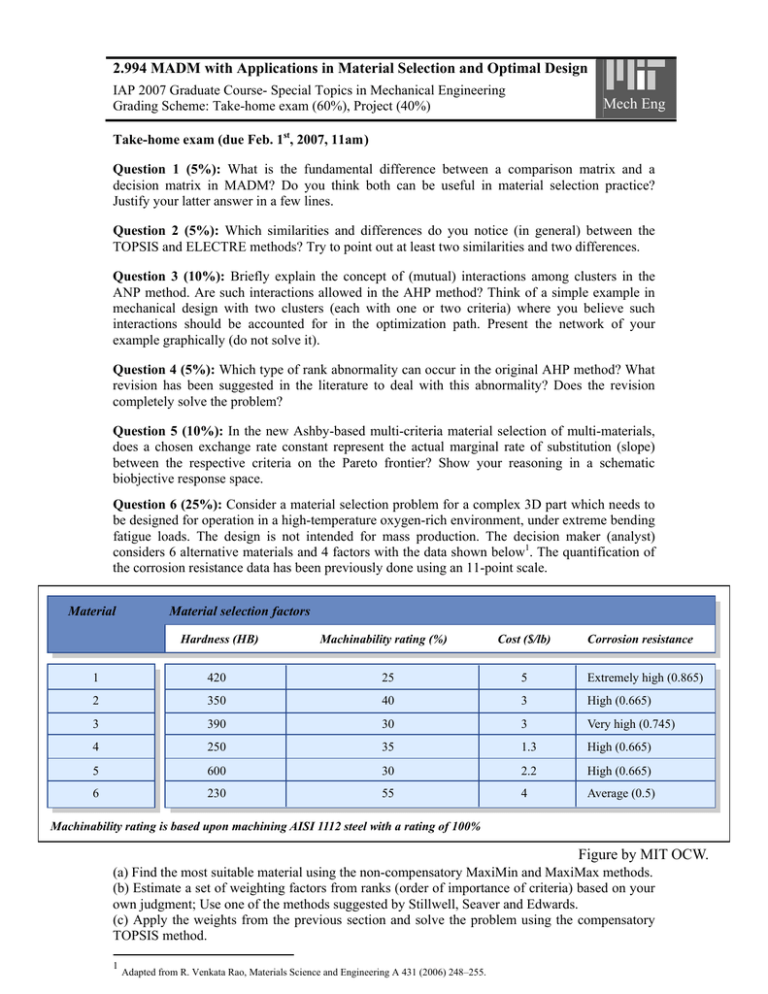
2.994 MADM with Applications in Material Selection and Optimal Design IAP 2007 Graduate Course- Special Topics in Mechanical Engineering Grading Scheme: Take-home exam (60%), Project (40%) Mech Eng Take-home exam (due Feb. 1st, 2007, 11am ) Question 1 (5%): What is the fundamental difference between a comparison matrix and a decision matrix in MADM? Do you think both can be useful in material selection practice? Justify your latter answer in a few lines. Question 2 (5%): Which similarities and differences do you notice (in general) between the TOPSIS and ELECTRE methods? Try to point out at least two similarities and two differences. Question 3 (10%): Briefly explain the concept of (mutual) interactions among clusters in the ANP method. Are such interactions allowed in the AHP method? Think of a simple example in mechanical design with two clusters (each with one or two criteria) where you believe such interactions should be accounted for in the optimization path. Present the network of your example graphically (do not solve it). Question 4 (5%): Which type of rank abnormality can occur in the original AHP method? What revision has been suggested in the literature to deal with this abnormality? Does the revision completely solve the problem? Question 5 (10%): In the new Ashby-based multi-criteria material selection of multi-materials, does a chosen exchange rate constant represent the actual marginal rate of substitution (slope) between the respective criteria on the Pareto frontier? Show your reasoning in a schematic biobjective response space. Question 6 (25%): Consider a material selection problem for a complex 3D part which needs to be designed for operation in a high-temperature oxygen-rich environment, under extreme bending fatigue loads. The design is not intended for mass production. The decision maker (analyst) considers 6 alternative materials and 4 factors with the data shown below1. The quantification of the corrosion resistance data has been previously done using an 11-point scale. Material Material selection factors Hardness (HB) Machinability rating (%) Cost ($/lb) Corrosion resistance 1 420 25 5 Extremely high (0.865) 2 350 40 3 High (0.665) 3 390 30 3 Very high (0.745) 4 250 35 1.3 High (0.665) 5 600 30 2.2 High (0.665) 6 230 55 4 Average (0.5) Machinability rating is based upon machining AISI 1112 steel with a rating of 100% Figure by MIT OCW. (a) Find the most suitable material using the non-compensatory MaxiMin and MaxiMax methods. (b) Estimate a set of weighting factors from ranks (order of importance of criteria) based on your own judgment; Use one of the methods suggested by Stillwell, Seaver and Edwards. (c) Apply the weights from the previous section and solve the problem using the compensatory TOPSIS method. 1 Adapted from R. Venkata Rao, Materials Science and Engineering A 431 (2006) 248–255.
